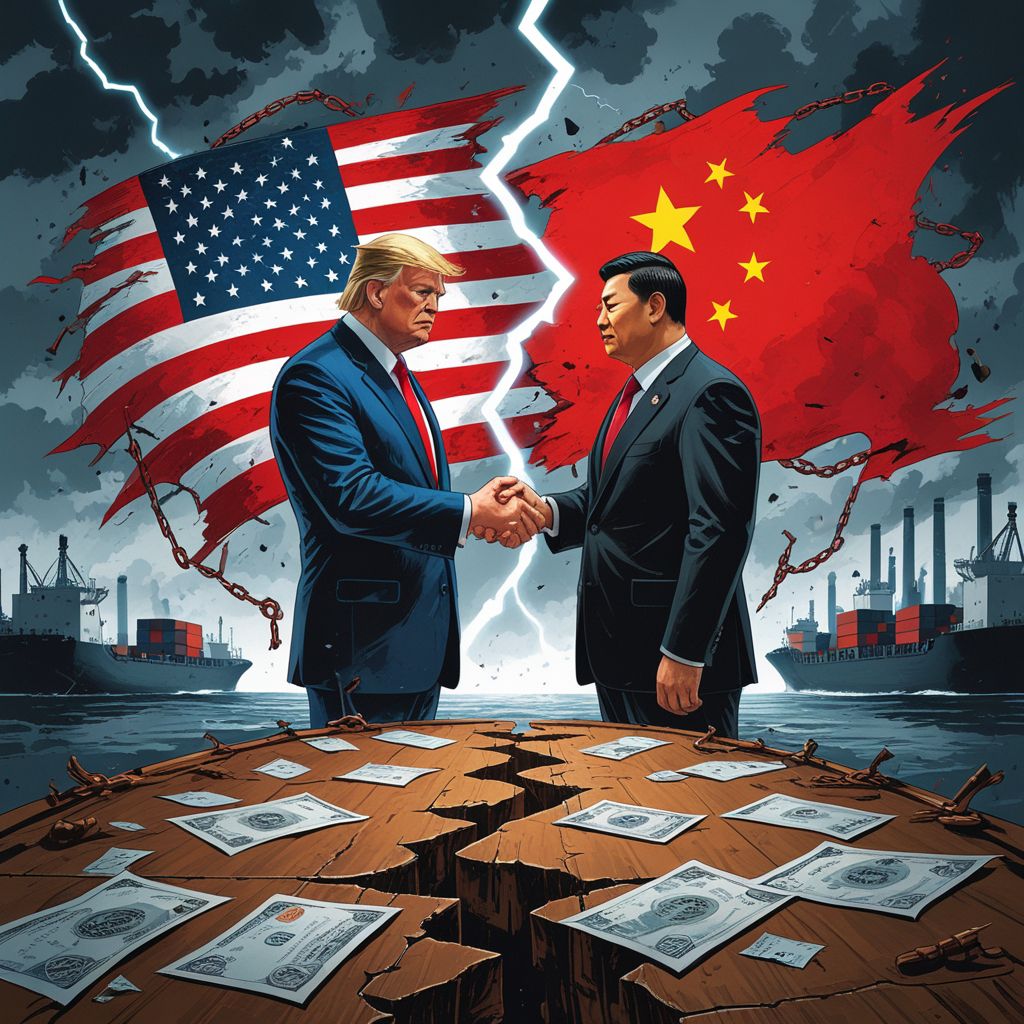
President Donald Trump’s aggressive tariff strategy has sent shockwaves through US-China trade relations, leaving many American businesses facing a stark economic reality. While some tech giants like Apple and Nvidia have secured a brief reprieve, many others are bracing for severe fallout as tariffs on Chinese imports soar to a staggering 145 percent.
Though Trump announced a 90-day delay for most of his proposed tariffs on other countries, he opted for a hardline approach toward China. In return, Beijing struck back with steep retaliatory duties of up to 125 percent, targeting a broad range of American exports—especially agriculture.
The president has defended the tariffs as a necessary step to protect and rejuvenate American manufacturing. However, the modern US economy is deeply intertwined with China, particularly in sectors reliant on low-cost imports. For many firms, the new tariffs will drive up production costs, slash margins, and potentially threaten their survival.
The US-China Trade Landscape
Despite years of rising tensions, China remains one of America’s largest trading partners, trailing only Canada and Mexico. In 2024, bilateral trade reached $582.4 billion, with the US importing $438.9 billion in goods from China and exporting just $143.5 billion back. This trade imbalance—$295.4 billion—remains the largest the US has with any nation.
Trump’s tariff escalation has spared certain products—temporarily. Smartphones, solar panels, semiconductors, and other electronics were exempted from the latest round of duties. But this relief may be short-lived, as the administration has hinted at potential future levies.
Who’s Most at Risk?
1. Fashion and Apparel Companies
Major American clothing brands like Nike, Levi’s, and Gap are heavily reliant on Asian manufacturing. Nike, for example, sources 95 percent of its footwear from China, Vietnam, and Indonesia. While China now faces 145 percent tariffs, Vietnam and Indonesia could soon see their 10 percent rates hiked if they don’t reach trade deals with Washington.
Gap’s production dependence on Vietnam has already taken a toll—its stock has dropped 14 percent since Trump’s early-April announcement. Nike shares are down 14.7 percent, while Levi’s has fallen 10.6 percent. Rising costs are expected to be passed on to consumers, making basic apparel more expensive.
2. Tech Sector – A Temporary Escape?
Tech titans like Apple and Nvidia have been granted short-term exemptions, avoiding the brunt of Trump’s tariffs for now. But they’re not in the clear. Products like memory chips and smartphones still face pre-existing 20 percent duties, and there’s a looming investigation into the national security risks of importing semiconductors.
Much of the US tech industry’s manufacturing and component sourcing is centered in Asia, particularly China and Taiwan. Apple, for instance, still assembles most of its products in China. Meanwhile, Nvidia relies on Taiwanese manufacturing and Chinese components for its high-end graphics cards and AI chips.
Analysts warn that building alternative supply chains will take years and significant investment—something smaller tech firms may struggle with.
3. US Agriculture – The Biggest Casualty
Few sectors are as vulnerable to Chinese retaliation as American agriculture. China accounted for 15 percent of US agricultural exports in 2024, with soya beans leading the pack. During Trump’s first trade war in 2018–2019, Chinese buyers turned to Brazil, leading to significant losses for US farmers.
Now, the stakes are even higher. With retaliatory tariffs reaching up to 125 percent, American farmers fear being priced out of the Chinese market entirely. The American Soybean Association has already voiced strong opposition, warning that the ongoing trade conflict could drive many farmers out of business.
The soya bean industry supports over 223,000 full-time jobs and contributes $124 billion to the US economy—surpassing the GDP of some small countries. Other key exports, including corn and pork, are also under threat, with major agribusinesses like Cargill, Tyson Foods, and Archer Daniels Midland expected to suffer reduced earnings from lost Chinese demand.
Inflation and Job Losses on the Horizon
According to a Yale Budget Lab report, the ripple effects of Trump’s tariff policies could lead to the loss of up to 740,000 US jobs by the end of 2025. As businesses struggle to absorb higher costs, many will have no choice but to raise prices or reduce output—potentially fueling inflation and slowing economic growth.
While some industries may benefit in the long term from reshoring and renewed domestic investment, the immediate outlook is bleak for sectors heavily integrated with China. With both Washington and Beijing digging in, US companies—and consumers—are caught in the crossfire of an intensifying trade war.